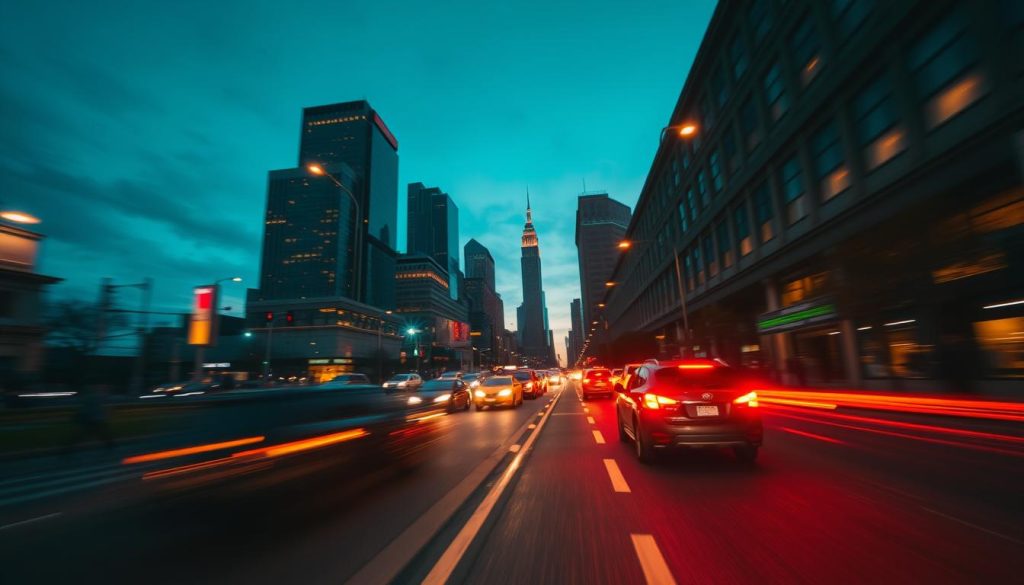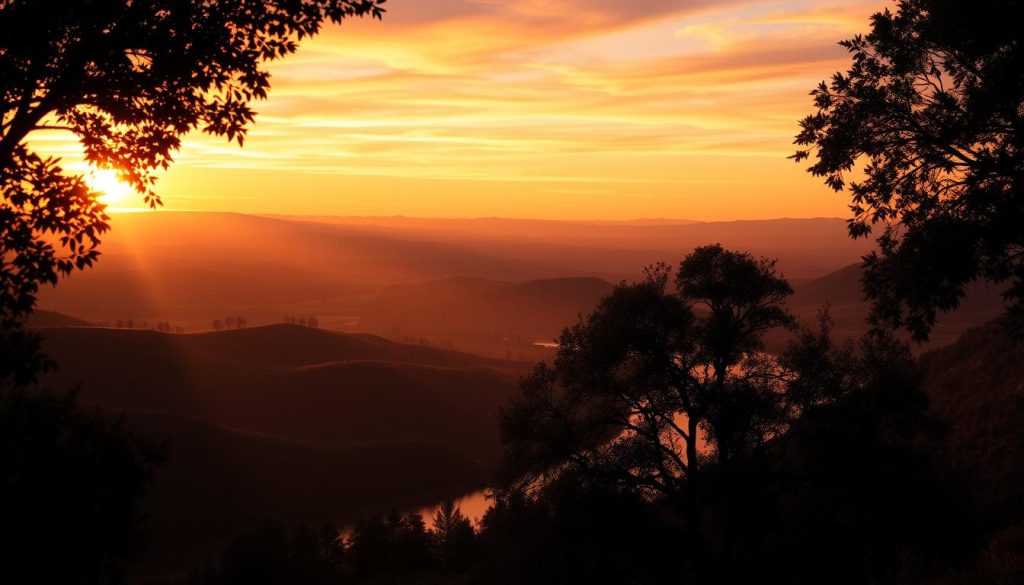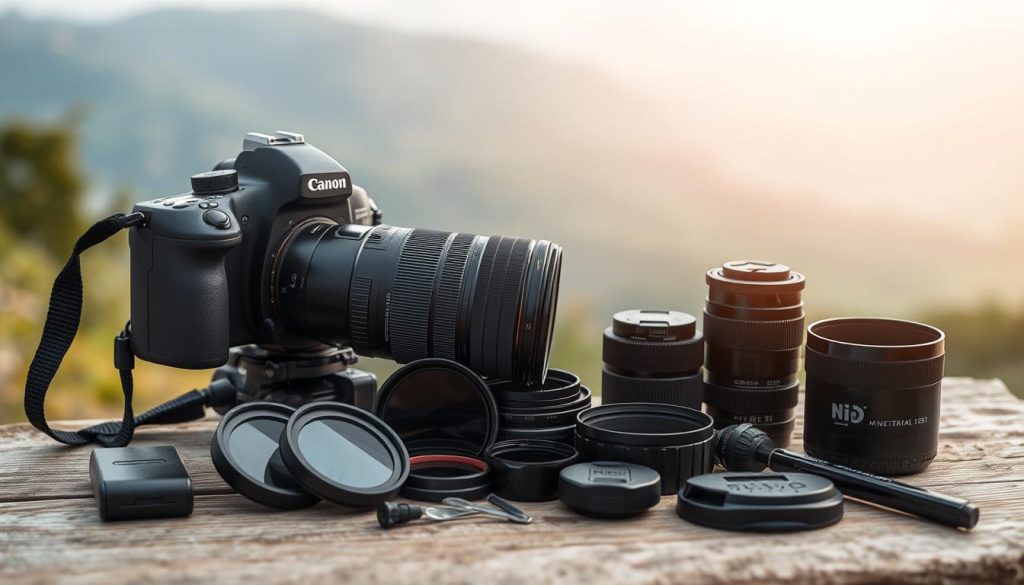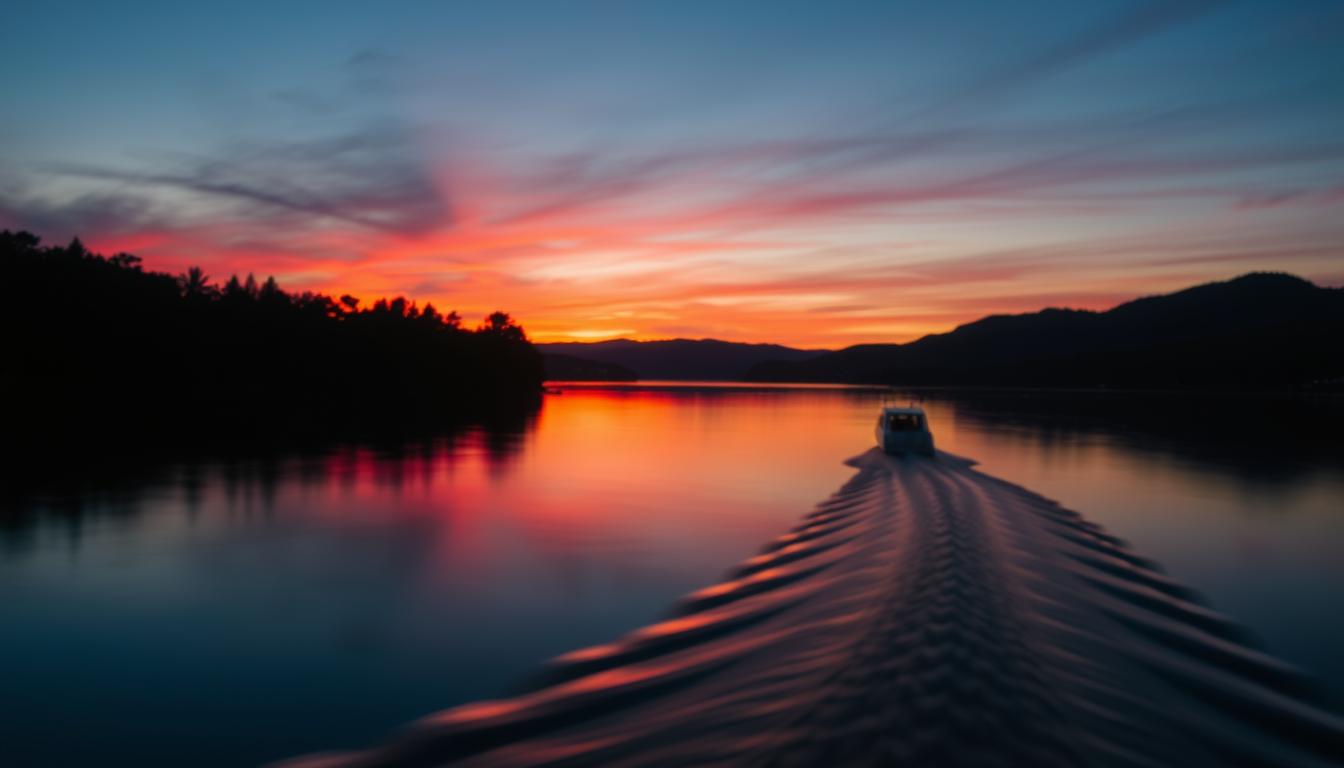I’m excited to share my knowledge of long exposure photography. This guide will reveal secrets and techniques to unlock its artistic potential. Whether you’re new or experienced, you’ll learn to capture stunning motion blur and light trails. You’ll also improve your landscape and low-light photography.
Long exposure photography is a powerful tool. It lets you manipulate time and light, making the ordinary extraordinary. With slower shutter speeds, you can create dreamlike images. From smooth waterfalls to vibrant light trails, the possibilities are endless.
In this article, I’ll share the basics of long exposure photography. I’ll give you expert insights and practical tips for professional results. Get ready to unleash your creativity and take your photography to new heights.
Unveiling the Secrets of Long Exposure Photography
Exploring long exposure photography is exciting and can change how you see the world. It’s all about the exposure time, which is key to making amazing photos. With it, we can capture scenes that go beyond what our eyes can see.
Understanding Exposure Time and its Impact
Exposure time, or shutter speed, is how long the camera’s sensor is open to light. In long exposure, we use longer times, from seconds to minutes. This lets us show movement and time in our photos, something still images can’t do.
Long exposure turns the ordinary into something amazing. It lets us blur reality and create art. We can tell stories with our photos in a way that’s both beautiful and unique.
Selecting the Ideal Camera Settings
To master long exposure, you need to know your camera settings. Shutter speed, aperture, and ISO work together to set the photo’s exposure. For long exposures, we often use slow shutter speeds, which need neutral density filters to balance the light.
| Camera Setting | Purpose |
|---|---|
| Shutter Speed | Controls the duration of light exposure, allowing for the capture of motion blur and light trails. |
| Aperture | Determines the depth of field, which can be used to selectively focus on specific elements in the frame. |
| ISO | Adjusts the camera’s sensitivity to light, enabling longer exposures without overexposing the image. |
| Neutral Density Filters | Reduce the amount of light entering the camera, making it possible to use slower shutter speeds in bright conditions. |
By adjusting these settings, we can make the most of long exposure photography. This way, we can create photos that amaze and inspire others.
Long Exposure Photography: The Art of Capturing Motion

Long exposure photography turns the ordinary into the extraordinary. It uses long shutter speeds to freeze moving subjects. This creates stunning effects that show the essence of movement.
It can capture blurred car trails, water’s ethereal dance, or city light trails. Long exposure reveals beauty our eyes often miss. We’ll explore how to master capturing motion through the lens.
Freezing the Moment: Mastering Motion Blur
To capture moving subjects, balance shutter speed with subject speed. A slower shutter speed creates motion blur. This turns a quick moment into a captivating story.
It works for fast cars or busy pedestrians. This technique makes the ordinary extraordinary.
Painting with Light: Creating Stunning Light Trails
Light trails are mesmerizing in long exposure photography. Keeping the shutter open captures light movement. This can be car headlights, city lights, or handheld lights.
This technique turns simple scenes into art. It’s breathtaking.
Capturing the Flow: Mastering Water Movement
Water is perfect for long exposure photography. It changes and flows. Long shutter speeds turn waves, streams, or waterfalls into dreamlike scenes.
This technique captures water’s movement. It also adds tranquility and serenity to images.
| Technique | Shutter Speed Range | Subject | Effect |
|---|---|---|---|
| Motion Blur | 1/30 – 1/2 second | Moving subjects (cars, people, etc.) | Frozen moment with a sense of motion |
| Light Trails | 1 – 30 seconds | Light sources (headlights, city lights) | Ethereal and captivating light trails |
| Water Movement | 1/2 – 30 seconds | Flowing water (waterfalls, streams, waves) | Smooth, dreamlike rendering of water movement |
Mastering these techniques opens up creative possibilities. It turns the ordinary into the extraordinary. You’ll capture motion like never before.
Harnessing Natural Light for Stunning Results

I love long exposure photography and the magic of natural light. The golden hour and blue hour add special touches to photos. Learning to use this light can make your photos amazing.
Golden Hour Magic: Leveraging Soft Lighting
The golden hour is a photographer’s dream. It happens just before sunrise or after sunset. During this time, the sun’s light is soft and warm, making photos look dreamy and romantic.
To get the most from the golden hour, try different shutter speeds and apertures. Longer exposures can make scenes look like they’re moving. Narrower apertures help everything in the photo look sharp. Play with light and shadow to add depth to your photos.
| Lighting Condition | Recommended Shutter Speed | Recommended Aperture |
|---|---|---|
| Golden Hour | 2-10 seconds | f/8 to f/16 |
| Blue Hour | 10-30 seconds | f/11 to f/22 |
| Low Light | 30-120 seconds | f/16 to f/22 |
The golden hour is short, so you must work fast. With practice, you can capture its magic in your photos.
Long Exposure Photography: Mastering the Basics

To take amazing long exposure photos, you need the right gear. I’ll show you the key tools, like a strong tripod, remote shutter release, and neutral density filters. These are key for longer shots. I’ll also give tips on using these tools to get stunning photos.
Essential Gear and Accessories
For long exposure photos, a few important items are needed. Let’s look at the must-haves:
- Tripod: A good tripod is the base of long exposure photography. It keeps your camera steady and stops camera shake, making your photos sharp.
- Remote Shutter Release: A remote shutter release lets you take photos without touching the camera. This helps avoid camera shake during long shots.
- Neutral Density Filters: These filters let less light into your camera. This way, you can take slower shots and capture the blur of things like water or clouds.
With these camera gear essentials, you’re ready to learn long exposure photography. Try different settings and styles to find what works best for you and get amazing photos.
Advanced Long Exposure Photography Techniques
As you get better at long exposure photography, it’s time to try new things. You’ll learn about light painting. This is where you use handheld lights to make cool light trails.
Imagine painting the night sky with your light. You’ll leave behind a trail of light that people will love.
Astrophotography is another cool technique you’ll learn. It’s about taking pictures of the night sky. With long exposures, you can show off the beauty of stars and the Milky Way.
You’ll get to see the universe in a new way. Your camera will help you capture its beauty forever.
Lastly, we’ll explore capturing cityscapes with long exposure. You’ll see cities in a new light. Traffic and people will look like they’re dancing in the light.
With these techniques, you can do amazing things with your camera. You’ll see the world in a whole new way.

